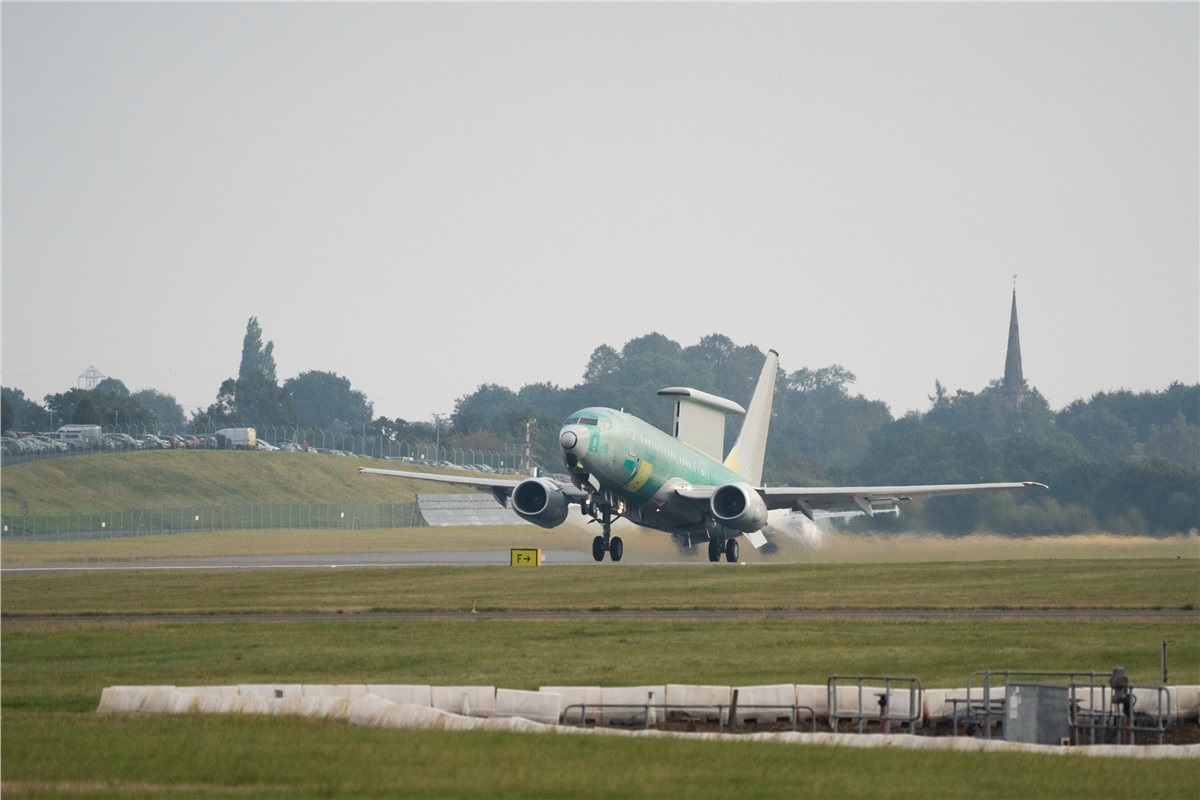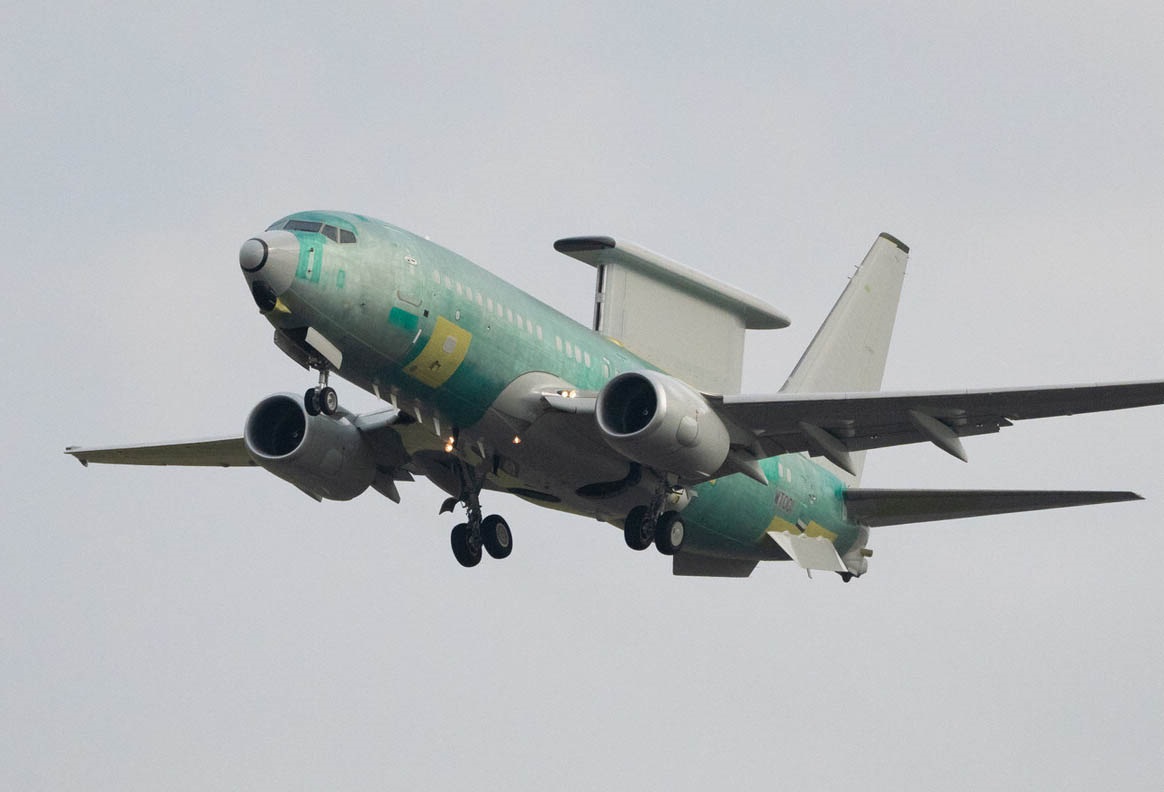


Boeing has completed the maiden flight of the first British E-7 Wedgetail, derived from the Boeing 737 Next Generation (NG) aircraft.
UK E-7 programme has reached a significant milestone in the test and evaluation phase with this development.
An excess of 100 people are modifying three 737 NGs in Birmingham, UK
E-7 Wedgetail will provide the RAF with advanced Airborne Early Warning & Control capabilities
Boeing has announced the completion of the first flight of UK's first of three E-7 Wedgetail aircraft for the Royal Air Force (RAF) as U.K. is all set to join the global operators Türkiye, South Korea 
In what could be marked as a significant milestone in the programme's test and evaluation phase, a Boeing flight-test crew conducted functional checks during the first flight from the Birmingham Airport of United Kingdom.
This transformation process involves the incorporation of advanced radar and communications systems, as well as the structural reconfiguration of aircraft, derived from the Boeing 737 Next Generation (NG).
Currently without a livery, the primered body aircraft, is first of three 737 NG aircraft on British soil undergoing modification by a highly skilled team of over 100 people at STS Aviation Services in Birmingham.
The modification work on the aircraft includes the installation of the MESA radar in a "shovel" shaped structure and fairings that is located on top of the fuselage.
Stu Voboril, Boeing vice president and E-7 program manager, said:
"This safe and systematic Functional Check Flight is an important step for Boeing and the RAF as part of our rigorous and extensive testing and evaluation,"
"Our team is committed to ensuring the E-7 delivers the safety, quality, and capabilities we've promised to our customer as we prepare for delivery of the UK's first E-7 Wedgetail to the RAF."
Group Captain Richard Osselton, RAF Programme Director for Wedgetail, said:
"Achieving the first flight of Wedgetail is a significant milestone, representing an outstanding effort from the RAF programme team, DE&S, Boeing and STS Aviation."
"We will now build on this success and look forward to continuing the Test & Evaluation phase as part of our preparations for the aircraft to enter into service."
DE&S Director Air Support, Richard Murray, said:
"This first flight marks a significant milestone for the programme and for our team who have worked tirelessly with our partners to progress what is a hugely complex endeavour. We are moving forward and will be delivering this critical capability to the RAF."
The functions of Wedgetail are derived from the requirement of creating an unique aerial platform that can act as a command and control center in the air, with the ability to coordinate air, sea, and land operations in a scenario of multiple stakeholder involvement.
The combat-proven E-7 detects and identifies adversarial targets at long range and tracks multiple airborne and maritime threats simultaneously with 360-degree coverage via the Multi-role Electronically Scanned Array (MESA) sensor. It provides the warfighter with critical multi-domain awareness and command-and-control decision advantage.
Maria Laine, president of Boeing UK, Ireland and the Nordics, said:
"We're proud of the robust E-7 modification line we've stood up in the UK to deliver the RAF's future Airborne Early Warning & Control fleet," "We are committed to delivering this crucial capability to support the UK's national security and contribute toward regional stability."
The future UK E-7 fleet will operate from RAF Lossiemouth in Scotland, where Boeing's local suppliers and contractors are nearing completion of the infrastructure facilities to support its introduction into service.

The E-7 Wedgetail aircraft model is not a new design, but an evolution of the Boeing 737 AEW&C (Airborne Early Warning and Control), which was originally developed for the Royal Australian Air Force (RAAF) in the 1990s.
Australia was the first country to adopt this platform, with the its first delivery in the year 2009. Since then, other nations such as South Korea and Turkey have incorporated the E-7 into their military fleets.
The RAF participates in a tri-lateral agreement with the Royal Australian Air Force (RAAF) and U.S. Air Force (USAF) toward cooperative Wedgetail interoperability, capability development, evaluation and testing, sustainment, operations, training, and safety.
Later this autumn, following a series of flight tests and further evaluation, the aircraft will depart to a paint facility to receive its RAF livery.
Last year, NATO made an announced that the E-7 will be the future platform for its early warning and air control mission, highlighting the strategic importance of this aircraft in global defense, a global interoperability approach that maximizes the effectiveness of the E-7 and reduces operating costs by standardizing systems and equipment between allies.
You may like to read.....
